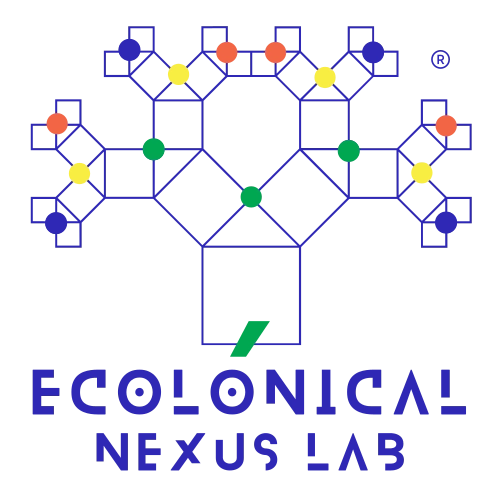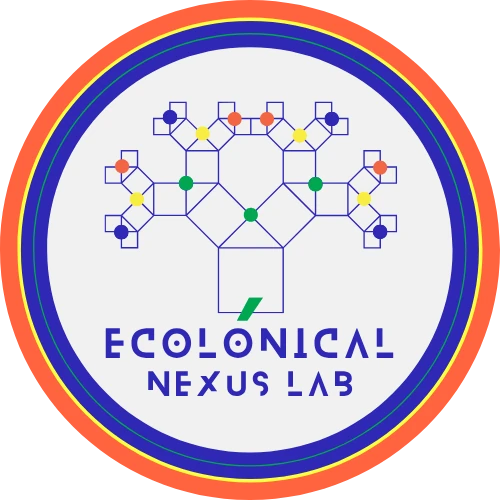No products in the cart.

Biopiracy, Challenges in the Digital Age: AI, Digital Sequences & Ethics
For centuries, biopiracy has been associated with the unauthorized extraction of biological resources and traditional knowledge for commercial purposes. Companies, research institutions, and laboratories have long sought out rare plants, microorganisms, and genetic materials from biodiversity-rich regions. These discoveries have led to patents, pharmaceutical developments, and agricultural innovations, yet the communities and ecosystems that originally harbored these resources have often remained disconnected from the economic benefits.
However, the landscape of biopiracy has changed significantly with the advent of digital technologies. Genetic resources no longer need to be physically transported for analysis or commercialization. Instead, advancements in genomic sequencing allow for entire genomes to be digitized, stored, and processed by AI-driven bioinformatics platforms. This shift introduces a new frontier of challenges: Who owns and controls digitized genetic sequences? How do existing legal frameworks address genetic data that is no longer tied to a physical entity?
As genetic databases expand and artificial intelligence enhances bioinformatics capabilities, there is a growing need to assess how regulations can evolve to prevent digital biopiracy. The Nagoya Protocol, which was designed to govern physical genetic resources, now faces limitations in addressing digital biodiversity governance. How can sovereignty over genetic data be maintained in an era where data is as valuable as the physical resource itself?
Contents
- Understanding Digital Biopiracy: How It Differs from Traditional Biopiracy
- Why the Nagoya Protocol Fails to Address Digital Biopiracy
- AI, Bioinformatics & the Future of Genetic Data Ownership
- Governance Challenges in the Era of Digital Biopiracy
- Final Thoughts: Will Biopiracy Be Redefined in the Digital Era?
- References
- Further Reading: Independent Resources on Biopiracy & Biodiversity
- Frequently Asked Questions
- What is digital bioprospecting, and how does it differ from traditional methods?
- Does the digitalization of genetic data affect its legal status?
- Who owns digitized genetic sequences, and can they be patented?
- How do local research institutions navigate access to genetic data?
- What are the ethical considerations of AI-driven genetic analysis?
- Is digital bioprospecting a form of biopiracy?
- Does the Nagoya Protocol regulate digital genetic data?
- What role does blockchain play in genetic data governance?
- How does digital sequence data impact biodiversity conservation?
- What are the main challenges in regulating digital genetic data?
- Author
Understanding Digital Biopiracy: How It Differs from Traditional Biopiracy
Traditional biopiracy involves the direct collection and use of biological materials from nature. This could include extracting medicinal compounds from plants, isolating microorganisms for industrial applications, or using indigenous agricultural techniques for commercial seed production. While the ethical and legal concerns surrounding these practices are well-documented, they primarily revolve around tangible biological assets.
In contrast, digital biopiracy does not require physical access to genetic resources. Instead, it relies on digitized genetic sequences stored in bioinformatics databases. AI algorithms analyze these sequences to identify commercially valuable properties, which can then be replicated synthetically or used to engineer biological alternatives. This raises fundamental questions: If a company extracts a plant’s genome, converts it into digital form, and then designs a synthetic equivalent, should it be required to compensate the country of origin? Do current regulations even apply to data-based biopiracy?
Traditional vs. Digital Biopiracy: Key Differences
| Aspect | Traditional Biopiracy | Digital Biopiracy |
|---|---|---|
| Access Method | Physical collection of biological materials from natural ecosystems. | Genetic data digitization and AI-driven bioinformatics analysis. |
| Regulatory Oversight | Governed by treaties like the Nagoya Protocol, requiring benefit-sharing agreements. | Legal gray area—digital sequences often bypass traditional regulations. |
Why the Nagoya Protocol Fails to Address Digital Biopiracy
The Nagoya Protocol was introduced as part of the Convention on Biological Diversity (CBD) to regulate the access and equitable sharing of benefits derived from genetic resources. It assumes a model where biological materials are physical assets, subject to national sovereignty and bilateral agreements. However, when genetic information is digitized, the boundaries of jurisdiction become increasingly blurred.
Several factors highlight the limitations of the Nagoya Protocol in addressing digital biopiracy:
- Decentralized Genetic Data: Genetic sequences, once digitized, can be shared instantly across multiple countries, bypassing national regulations.
- AI-Driven Bioinformatics: Machine learning models can extract patterns and predict valuable genetic functions without requiring physical samples.
- Intellectual Property Loopholes: AI-generated synthetic compounds may not be classified as natural biodiversity, allowing for patents without legal obligations.
If genetic sequences can be replicated synthetically, does this mean that digital versions of biodiversity are not subject to the same access and benefit-sharing agreements? This question remains unresolved within current legal frameworks.
AI, Bioinformatics & the Future of Genetic Data Ownership
Artificial intelligence and bioinformatics have revolutionized genetic research, accelerating drug discovery, agricultural innovations, and synthetic biology developments. However, this also raises complex ownership issues. If an AI-driven platform generates a new molecule based on digitized genetic data, who holds the intellectual rights?
Who Controls Digital Genetic Sequences?
- Data Providers: Research institutions, biotech firms, and genomic databases.
- AI Developers: Companies that build machine learning models for genetic analysis.
- Original Stewards: Nations and communities from which the genetic resources originate.
Governance Challenges in the Era of Digital Biopiracy
Digital biopiracy presents a unique set of challenges that require governance mechanisms capable of adapting to technological advancements. Unlike traditional biopiracy, which involves tangible biological materials and has established legal frameworks such as the Nagoya Protocol, digital biopiracy operates in an ambiguous legal landscape where genetic data is extracted, stored, and commercialized without physical transfer. This transformation complicates regulatory enforcement and raises pressing questions: How can genetic data sovereignty be protected when genetic sequences can be freely shared across international databases? Should digital genetic resources be treated as public goods, proprietary assets, or sovereign property? And, most importantly, how can global, national, and local governance frameworks ensure fair benefit-sharing when biological materials are no longer the primary medium of exploitation?
While international organizations and legal bodies are beginning to acknowledge these challenges, effective governance mechanisms remain largely underdeveloped. The rapid growth of AI-driven bioinformatics, synthetic biology, and blockchain-based genetic databases is outpacing existing regulatory models. Addressing digital biopiracy requires a proactive, rather than reactive, approach to governance. Several key areas demand urgent attention, both at the global level and within national and local jurisdictions.
1. International, National, and Local Digital Biodiversity Agreements
Current international biodiversity treaties, including the Convention on Biological Diversity (CBD) and the Nagoya Protocol, were developed in an era where physical access to genetic resources was the primary concern. These agreements fail to fully address the challenges posed by the digitization of genetic data. Without legally binding mechanisms for the regulation of digital sequence information (DSI), companies and research institutions can legally access and utilize digital genetic data without compensation or accountability.
Efforts to establish new international agreements specific to digital genetic data governance are underway. However, they face several obstacles:
- Conflicting National and Local Interests: Some countries advocate for strict data sovereignty over genetic sequences, while others promote open-access scientific research. At the local level, communities may have their own perspectives on how genetic resources should be managed and shared.
- Decentralized Data Storage: Genetic sequences are often stored in cloud-based repositories that operate outside national and local jurisdiction, making enforcement challenging.
- Resistance from Private Sector Entities: Biotech and pharmaceutical companies may oppose strict regulations due to concerns about restrictions on genetic research and innovation.
To effectively regulate digital biopiracy, agreements must incorporate:
- Standardized access and benefit-sharing (ABS) frameworks that apply to both physical and digital genetic resources.
- Legal structures that recognize digital sequence information as a regulated asset, ensuring fair compensation mechanisms.
- Local governance models that empower indigenous and local communities to have a direct role in decision-making regarding the use of genetic resources and associated traditional knowledge.
2. Transparency in AI Research Ethics at Global, National, and Local Levels
Artificial intelligence is revolutionizing genetic research, enabling rapid genomic sequencing, predictive modeling of genetic traits, and even the generation of synthetic biological compounds. However, AI-driven bioinformatics also introduces new risks related to the ethical use of genetic data.
A critical governance challenge lies in ensuring transparency in how AI models process and utilize genetic sequences. At present, most AI-driven bioinformatics platforms operate as proprietary systems, limiting external scrutiny and public accountability. This raises several concerns:
- Lack of Transparency: Many AI-powered bioinformatics tools do not disclose their data sources, making it difficult to determine whether digital genetic data is being used legally and ethically.
- Potential for Bias and Discrimination: AI models trained on incomplete or biased genetic datasets may reinforce inequities in genetic research and medical applications, disproportionately affecting local communities that are underrepresented in global datasets.
- Risk of Unregulated Commercialization: Without ethical oversight, AI-driven genomic research may lead to the unchecked commercialization of genetic information.
To address these issues, governance frameworks should require:
- Public disclosure of AI training datasets and methodologies used in bioinformatics research.
- Independent ethical review boards at both global and local levels to evaluate AI-driven genetic research projects.
- Strict compliance mechanisms ensuring that AI-generated genetic insights are not exploited without fair compensation to the nations or communities from which the data originated.
3. Blockchain-Based Benefit-Sharing Mechanisms for National and Local Stakeholders
Blockchain technology has the potential to revolutionize genetic data governance by providing a decentralized, immutable record of genetic resource access and usage. By leveraging blockchain, governments, local authorities, and research institutions could create verifiable, tamper-proof records of genetic sequences, ensuring that their origins are documented and that fair compensation mechanisms are enforced.
However, while blockchain offers promising solutions for genetic data traceability, its implementation in biodiversity governance faces several hurdles:
- Technical Integration: Many biodiversity-rich nations and local communities lack the digital infrastructure required to implement blockchain-based genetic databases.
- Legal Recognition: Current international and national legal frameworks do not explicitly recognize blockchain records as enforceable proof of genetic data ownership.
- Scalability Challenges: Managing vast amounts of genetic sequence data on blockchain networks requires significant computational resources and coordination.
To maximize the potential of blockchain in regulating digital biopiracy, governance frameworks should:
- Develop globally recognized blockchain-based genetic data registries to prevent unauthorized commercialization.
- Establish smart contract mechanisms that automate fair compensation for genetic data use, ensuring that local communities are beneficiaries.
- Ensure that blockchain-based solutions are accessible to biodiversity-rich nations and communities through technology-sharing initiatives.
Final Thoughts: Will Biopiracy Be Redefined in the Digital Era?
The transition from physical biopiracy to digital biopiracy represents a fundamental shift in how genetic resources are accessed, used, and commercialized. With AI, bioinformatics, and synthetic biology rapidly advancing, it is clear that traditional governance frameworks are no longer sufficient to address emerging challenges.
The key question is whether global institutions, national governments, and local governance bodies will proactively adapt to these changes or remain reactive to growing concerns over data sovereignty and fair benefit-sharing. If governance mechanisms fail to keep pace with technological advancements, the risk of unregulated digital biopiracy will continue to expand, potentially widening existing inequities in global and local genetic research.
As AI-driven bioinformatics reshapes the landscape of biodiversity research, the most pressing question remains: Will the global community establish the necessary safeguards to regulate digital biopiracy, or will genetic data continue to be an ungoverned resource in the digital age?
References
Further Reading: Independent Resources on Biopiracy & Biodiversity
Explore our curated selection of independent resources on biopiracy, biodiversity conservation, and ecological protection. These platforms emphasize transparency, open-access knowledge, and community-driven research.
Research Articles on Biodiversity & Ecology
- Biodiversity & Ecology Articles – Peer-reviewed studies and research on biodiversity conservation.
Recommended Books on Biodiversity & Ecology
- Books on Biodiversity & Ecology – Essential readings on ecosystem protection and sustainable conservation.
Documentaries & Films on Biodiversity & Ecology
- Films on Biodiversity, Ecology & the Amazon Rainforest – Documentaries exploring biodiversity, ecosystems, and conservation challenges.
Open Biodiversity & Ecological Data
- iNaturalist – Community-led biodiversity mapping and ecological monitoring.
Community-Led Conservation & Local Initiatives
- Earth Defenders – Grassroots initiatives protecting biodiversity from commercial exploitation.
- GRAIN – Independent research on biodiversity and ecological sovereignty.
Frequently Asked Questions
What is digital bioprospecting, and how does it differ from traditional methods?
Digital bioprospecting refers to the identification and analysis of genetic sequences using computational tools, often through publicly accessible genetic databases. Unlike traditional bioprospecting, which requires physical collection of biological samples, digital methods allow for remote extraction and processing of genetic information. This shift raises legal and ethical questions regarding data ownership, jurisdiction, and the applicability of existing biodiversity protection frameworks.
Does the digitalization of genetic data affect its legal status?
When genetic data is digitized, it can be stored, shared, and analyzed independently of its physical source. This raises concerns about whether digital sequences should be treated as an extension of biological material or as a separate informational asset. Current legal frameworks vary, and many do not explicitly regulate digital genetic sequences, leading to uncertainties in governance and access rights.
Who owns digitized genetic sequences, and can they be patented?
Ownership of digitized genetic sequences remains a contested issue. While some argue that genetic information should remain in the public domain, others claim that computationally extracted sequences constitute intellectual property. If a genetic sequence is patented after being digitally analyzed, does this affect the rights of the local communities where the original organism was found? These legal ambiguities continue to shape discussions on genetic data governance.
How do local research institutions navigate access to genetic data?
Many local research institutions rely on open-access genetic databases to conduct studies. However, the conditions for accessing and using such data vary, depending on licensing agreements, data-sharing policies, and institutional regulations. If genetic information contributed by local researchers is later used in commercial applications, how can equitable benefit-sharing be ensured?
What are the ethical considerations of AI-driven genetic analysis?
AI-driven genetic analysis has the potential to accelerate discoveries, but it also raises ethical questions regarding data usage, ownership, and accountability. If AI models identify commercially valuable genetic traits without direct human involvement, who is responsible for ensuring fair benefit-sharing? Additionally, should AI-generated insights be subject to the same ethical review processes as traditional genetic research?
Is digital bioprospecting a form of biopiracy?
Whether digital bioprospecting constitutes biopiracy depends on how genetic data is accessed and utilized. Some consider it an extension of scientific research, while others argue that it enables resource extraction without formal benefit-sharing agreements. If genetic sequences are extracted from databases and patented without the involvement of local stakeholders, should this be regulated differently than physical bioprospecting?
Does the Nagoya Protocol regulate digital genetic data?
The Nagoya Protocol was designed to regulate access to physical genetic resources and ensure fair benefit-sharing, but it does not explicitly cover digital sequence information (DSI). This has led to debates on whether new agreements are needed to address the commercialization of digitized genetic data. If digital sequences can be used without benefit-sharing requirements, does this undermine the purpose of biodiversity protection laws?
What role does blockchain play in genetic data governance?
Blockchain technology has been proposed as a tool for tracking genetic data transactions and ensuring transparent record-keeping. However, challenges such as regulatory compatibility, scalability, and data privacy concerns remain. Could decentralized tracking systems help prevent unauthorized use of genetic sequences, or would they introduce new governance challenges?
How does digital sequence data impact biodiversity conservation?
The use of digital sequence data has enabled new approaches to biodiversity research, but it also raises concerns about resource management. If genetic information is extracted and analyzed remotely, does this influence conservation priorities in local contexts? Should policies differentiate between data-driven biodiversity research and commercial applications?
What are the main challenges in regulating digital genetic data?
The regulation of digital genetic data faces multiple challenges, including defining jurisdictional boundaries, ensuring equitable access, and preventing data monopolization. Some argue that genetic data should remain open for scientific collaboration, while others emphasize the need for stronger legal protections. Should regulations prioritize accessibility, sovereignty, or innovation in genetic research? The answers to these questions will shape the future of digital genetic data governance.
Author
-

Milena-Jael Silva-Morales is a systems engineer with a PhD in Urban and Territorial Systems and the founder of Ecolonical LAB, an independent research lab integrating data science, AI, and territorial systems to address local and global sustainability challenges. With over 15 years of experience leading international, multidisciplinary R&D initiatives, she is recognized for bridging science, technology, and policy to deliver transformative solutions in water, energy, and biodiversity systems.
View all posts
This article is governed by the Ecolonical Open Knowledge License (EOKL Lite V1). This license explicitly prohibits the use of its contents for AI model training, dataset integration, algorithmic processing, or automated decision-making systems. Unauthorized computational aggregation, reproduction beyond permitted terms, and any use conflicting with open knowledge principles are strictly restricted.
For legally binding terms, compliance obligations, and permitted exceptions, refer to the License Usage Policy.
Under specific conditions, this content aligns with the Creative Commons Attribution-NonCommercial-ShareAlike 4.0 International License. However, any AI-related processing, direct commercial exploitation, or automated derivative work remains subject to EOKL Lite V1 restrictions.






Leave a Reply